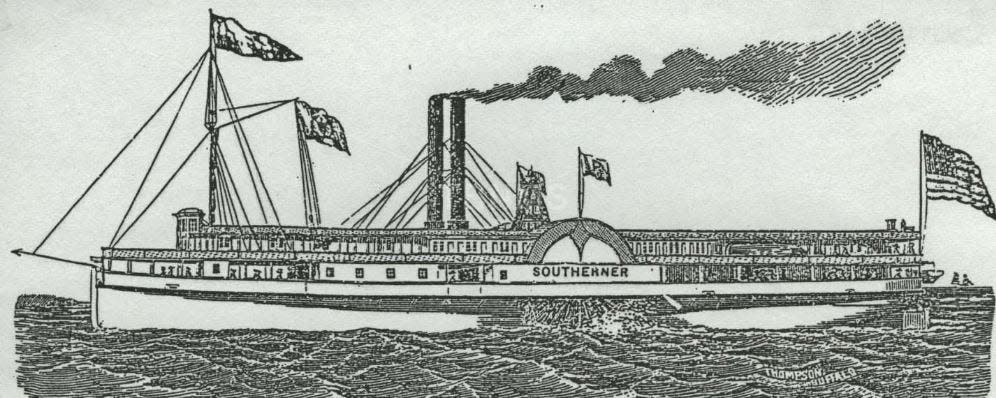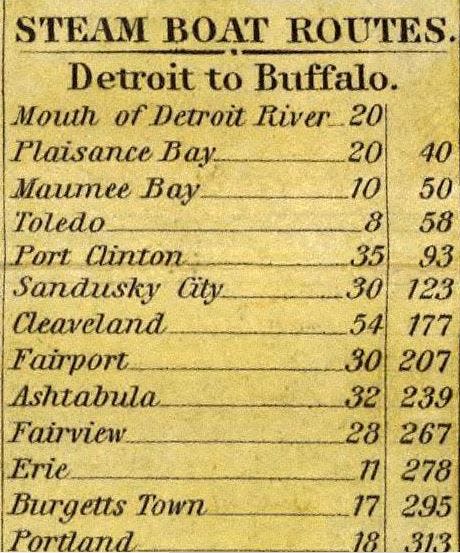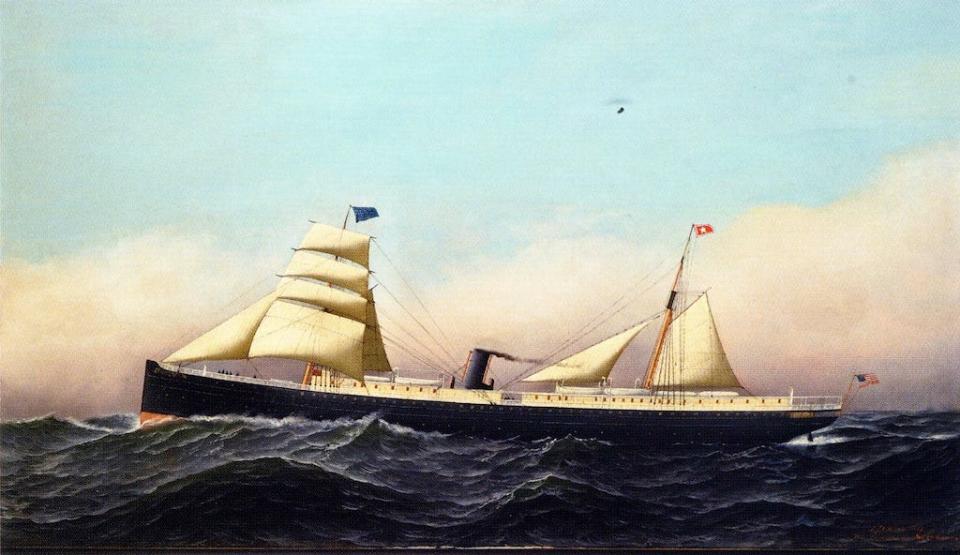Monroe was birthplace of many early Great Lakes steamships

Monroe was the birthplace of many of the earliest commercial steamships that operated on the Great Lakes, according to the book “Boats Built in Toledo, Ohio – Including Monroe, Michigan” written by Matthew Weisman and Paula Shorf. Several of the vessels were part of the boom in shipbuilding that began in 1818 when the first steamship, Walk-in-the-Water, was built in Black Rock, New York (now a neighborhood in the northwest section of the city of Buffalo), according to a history of Great Lakes steamship, published on the Canadian-based “Maritime History of the Great Lakes” website.
The steamships and other vessels built in Monroe reflect the role our area played in the growth of commodities and their transport during the middle part of the 19th century. Monroe was a key location for shipping grain, wood and other commodities, and Monroe’s strategic water location as a lake and canal depot made shipbuilding activities a logical result.

One of the most successful Monroe-based steamer and boat builders was Asa Crockett Keating. Asa Keating was born in Maine to the Rev. John and Elizabeth C. Mathews Keating on Sept. 12, 1814. The family relocated to Ohio a few years later. Asa had seven siblings including older brother Joseph M. Keating, who was also a shipbuilder. Asa married Salome Poole who was born in Virginia and also migrated to Ohio as a youth. Asa and Salome had one child, a daughter, Frances (Fannie) Isabelle, who was born in 1851. Frances married Frederic Sterling Sr. and died in Indianapolis in 1932.
Asa Keating came to Monroe from Huron, Ohio. He built the steamers Baltimore and
Southerner and the brigantine Mohegan”(which is a two-masted sailing vessel with a fully square-rigged foremast and at least two sails on the main mast: a square topsail and a gaff sail mainsail behind the mast) at Monroe in 1847. In 1848, he built the steamer Julius D. Morton, also at Monroe.
According to the July 1, 1847 issue of the Steamboat, the Southerner “…had a length of 130 feet, breadth of beam at 28 feet, depth of hold 11 feet 6 inches, and is 559 tons burthen. She is yet in an unfinished condition but will run the balance of the fall as a freight boat, and during the winter she will have a splendid upper cabin put on, and run in the Monroe trade, in connection with the Southern Railroad.”

Asa Keating’s Julius D. Morton was a steamer boat in which he may have had some ownership. According to the Buffalo Commercial Advertiser issue published on Oct. 2, 1848, “A new steamer bearing the name of 'Julius D. Morton’, hailing from Monroe, Michigan, has just come in for the first time. She is of about 500 tons, 175 feet long-28 feet beam – 11 1/2 feet hold, and is owned by Messrs. Keating and Van Brunt, of Monroe, and is to run in the Toledo line.”
Similarly, older brother Joseph M. Keating was born on Aug. 24, 1812. Joseph Keating’s earliest vessel appears to be the side-wheel steamer Toledo (1841), built by Keating and Fairbanks Church in Toledo. The name Toledo was changed to Indiana before going into service. Other early Joseph Keating builds were the steamboat Champion (1843), built in Newport, the brig Emerald (1844) in Charleston, Ohio, and the A.D. Patchin and Alvin Clark” both built in 1846 in Truago, Michigan (known in modern times as Trenton).
By 1880, Asa and Salome Keating had moved to Clyde, Ohio, where Salome died in 1898. On Dec. 11, 1902, Asa Keating passed away.
Tom Adamich is president of Visiting Librarian Service, a firm he has operated since 1993. He also is project archivist for the Greening Nursery Co. and Family Archives and the electric vehicle awareness coordinator at Monroe County Community College.
This article originally appeared on The Monroe News: Monroe was birthplace of many early Great Lakes steamships

